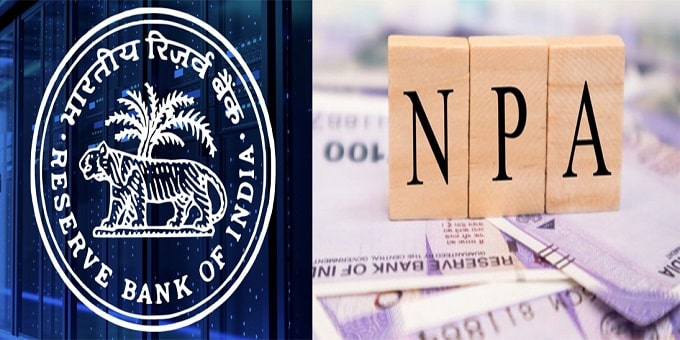On December 27, 2019, According to the 20th issue of the Financial Stability Report (FSR) 2019 released by Reserve Bank of India(RBI), the gross non-performing assets (GNPA) ratio of all scheduled commercial banks (SCBs) can increase from 9.3 % in September 2019 to 9.9 % in September 2020 due to changes in macroeconomic conditions, modest growth in new NPAs and the impact of declining credit growth rate.
The GNPA ratio of SCB’s was 9.3 % between March and September 2019. Highlights of the report:
Highlights of the report:
i.Bank wise estimation of gross GNPA: the GNPA ratio of public sector banks (PSBs) will increase from 12.7 % in September 2019 to 13.2 % in September 2020 and the GNPA ratio of private banks (PVBs) from 3.9 % to reach 4.2 %. The GNPAs of foreign banks can also rise to 3.1 % from 2.9 %.
ii.NNPA: As per the report, Net NPAs (Non-performing Asset) of banks fell to 3.7 % in September 2019. This explains the increased provision for NPAs. The integrated provision coverage ratio (PCR) of banks increased from 60.5 % in March 2019 to 61.5 % in September 2019.
iii.Credit growth: The report noted that Scheduled commercial banks’ (SCBs) credit growth remained low at an 8.7 % year-on-year (Y-O-Y) basis in September 2019, down from 13.2 % registered in March 2019. However,Private sector banks registered double-digit credit growth of 16.5 % in September 2019.
iv.CRAR: The ratio of banks capital to risk-weighted assets ratio (CRAR) improved from 14.3 % in March 2019 to 15.1 % in September 2019 due to government’s capital infusion of into public sector banks. For public sector banks, the CRAR improved from 12.2 % to 13.5 % during this period.
v. Bank-wise distribution of asset quality: In September 2019, the GNPA ratio of 24 banks was less than 5% while the GNPA ratio of 4 banks was more than 20 %.
Agriculture and services sector :The GNPA ratio related to agriculture and services sector fell from around 8% to 10.1 % during the period under review.
Industry sector : For the industry sector, this ratio improved from about 5% to 3.79 %.
vi.The top 100 borrowers accounted for 16.4 % of the total loans of banks and 16.3% in GNPA.
PCR: Provision coverage ratio is the ratio that gives an indication about the provisions made against bad loans i.e the extent of funds a bank has kept aside to cover loan losses. When the PCR is higher, the unexposed part of bad loans is lower. Therefore, higher PCR is good for an economy.
NPA:
A non performing asset (NPA) is a loan or advance for which the principal or interest payment remained overdue for a period of 90 days.
About RBI:
Headquarters– Maharashtra
Established– 1 April 1935
Governor– Shaktikanta Das
Deputy Governors– 4 (BP Kanungo, N S Vishwanathan, and Mahesh Kumar Jain, 1 is yet to be appointed)





